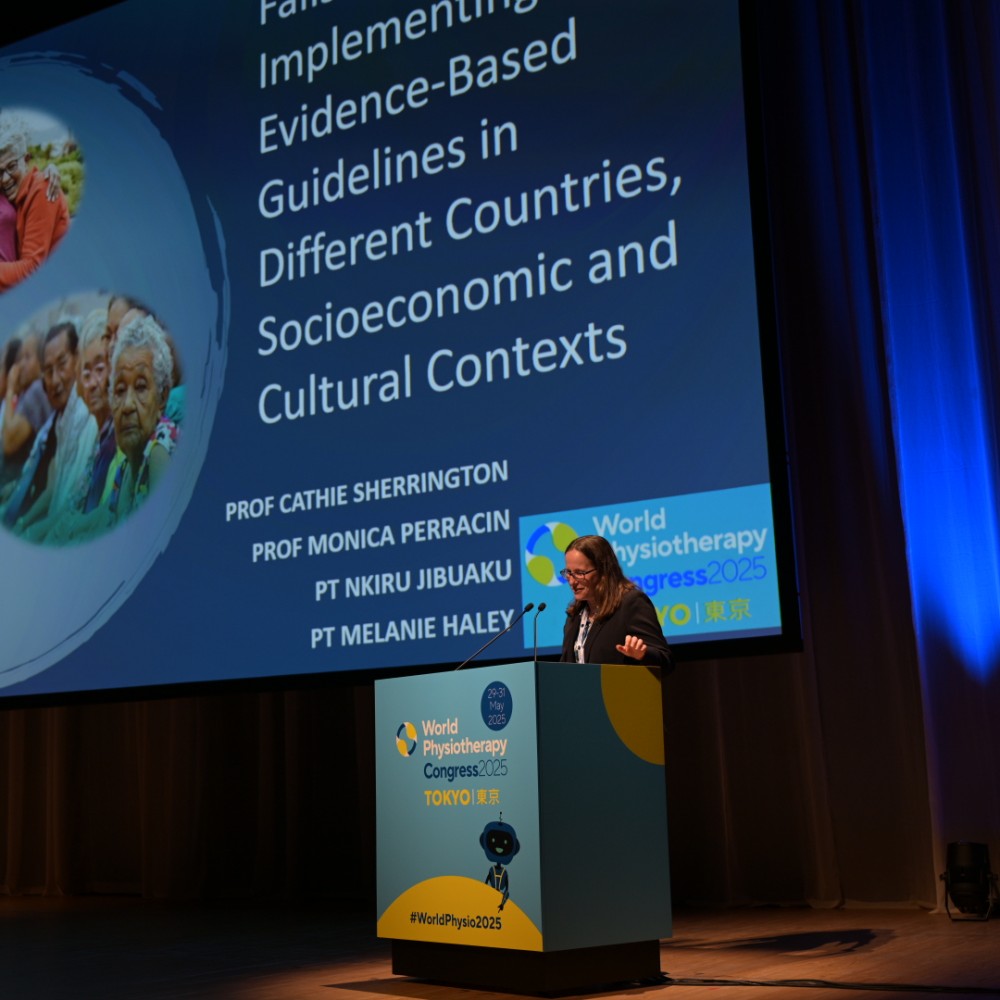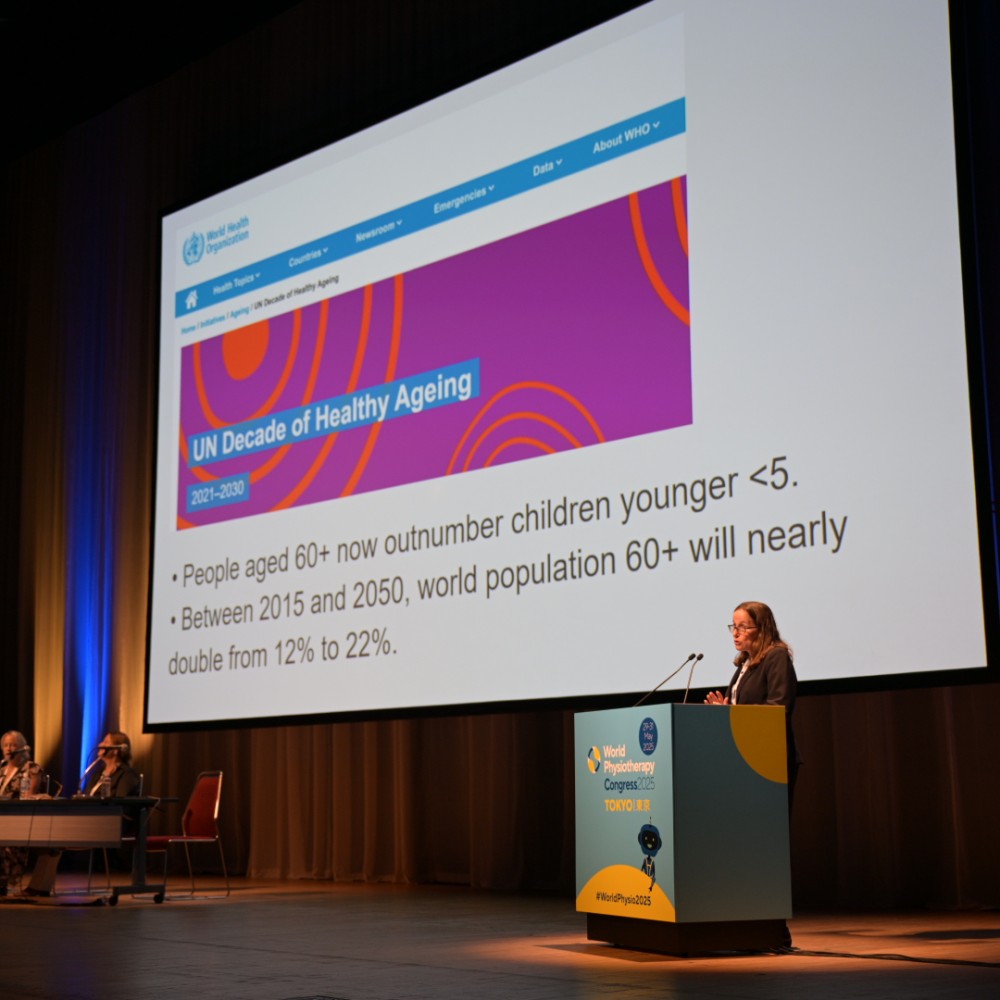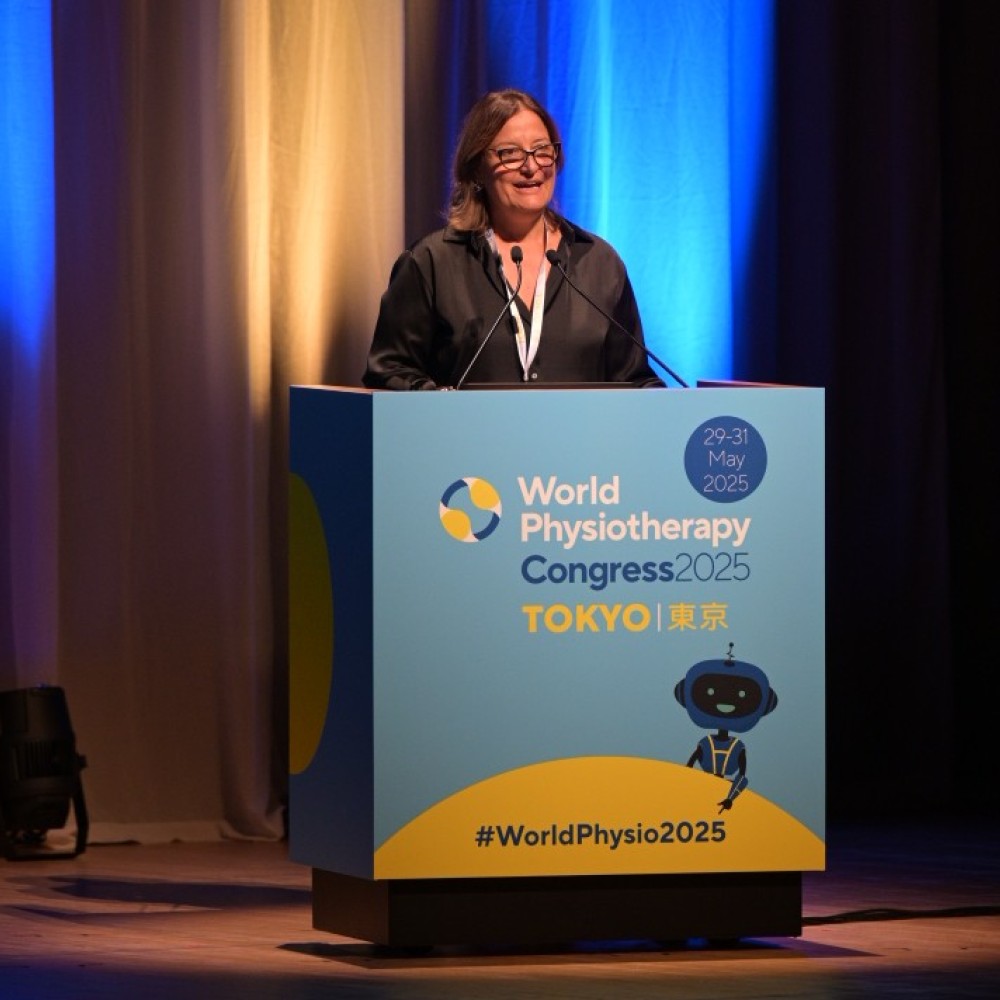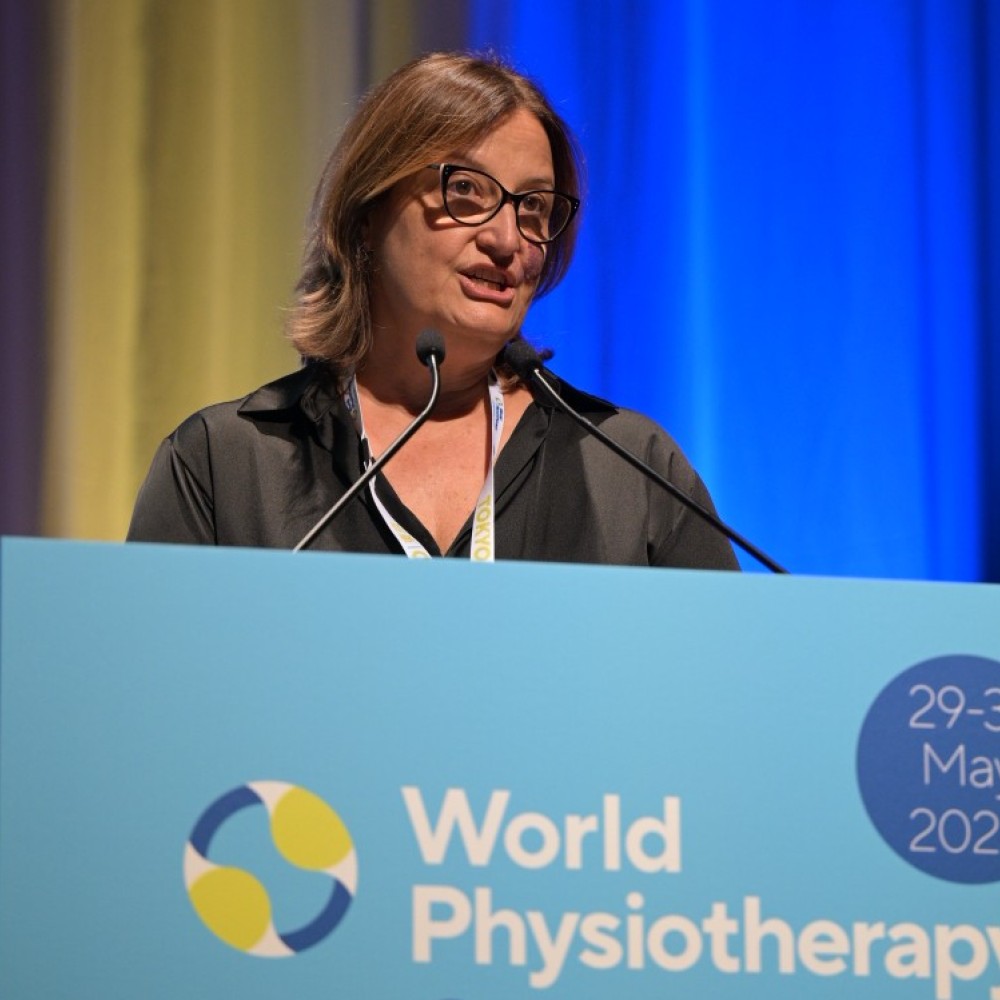Falls remain the second leading cause of unintentional injury deaths globally—claiming more than 680,000 lives each year. Physiotherapists are being called to the forefront of prevention efforts. At the World Physiotherapy Congress 2025, 29-31 May, a clinical seminar chaired by Cathie Sherrington from the University of Sydney explored how the World Guidelines for Falls Prevention and Management for Older Adults are being translated into practice across a range of countries, health systems and socioeconomic settings.
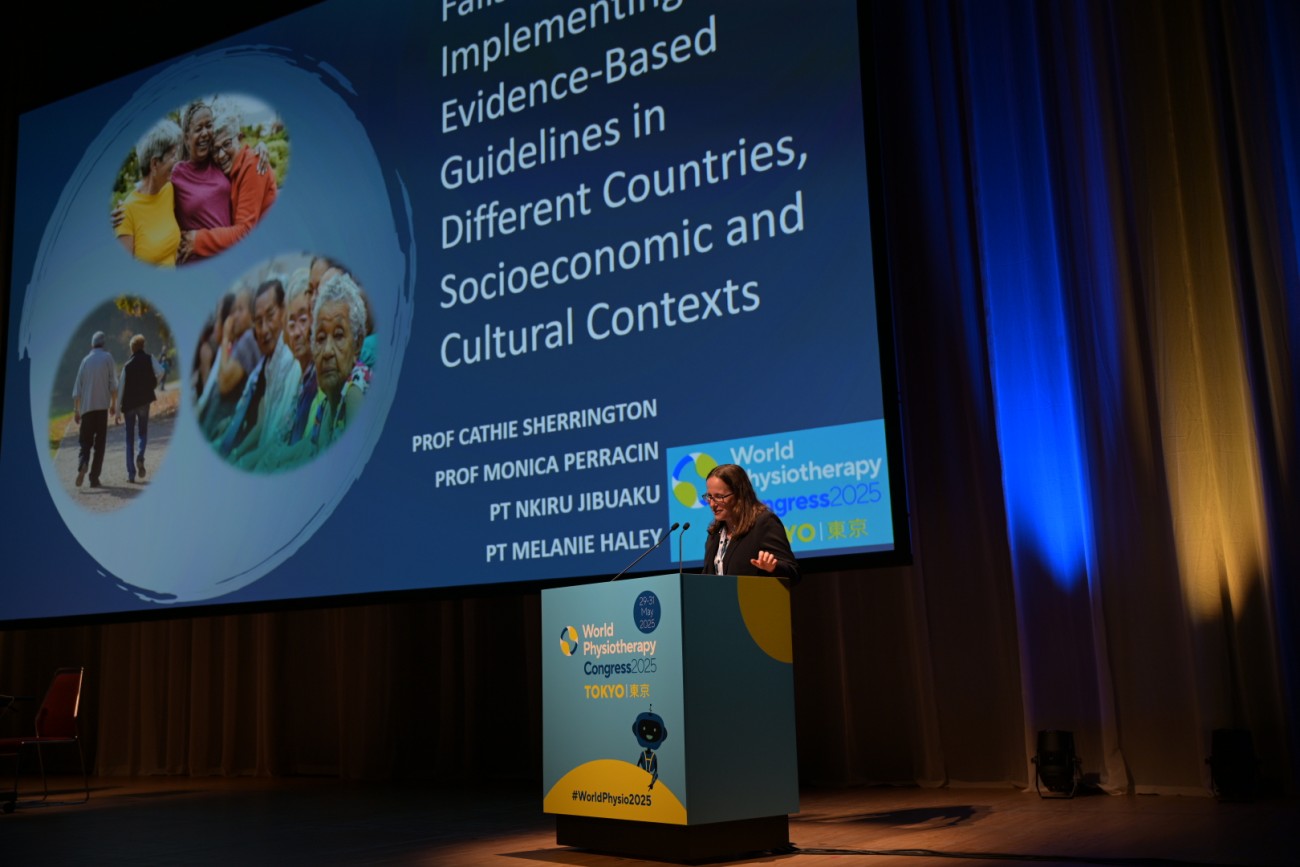
Cathie opened the session by situating the conversation within the United Nations Decade of Healthy Ageing. “By 2050, 22 per cent of the world’s population will be over 60. Our systems must adapt,” she said. She outlined the guidelines’ risk stratification model—low, intermediate and high risk—and emphasised that falls often arise from complex interactions between a person’s physical ability, the task they are performing and the environment in which they live. “Multidomain interventions reduce falls by up to 23 per cent,” she said, “but implementation across countries remains uneven.”
From Brazil, Monica Rodrigues Ferracini illustrated the real-world impact of these gaps through the story of Bernardina, a 76-year-old woman from São Paulo. Although Bernardina has experienced falls and balance problems, she blames external conditions like uneven footpaths and does not see herself as being at risk. “Behavioural and systemic barriers limit adherence and access,” Monica said. She shared data from a national survey of 454 physiotherapists: while 70 per cent believed falls prevention was essential, only 30 per cent were aware of the guidelines—and just 17 per cent were applying them. “We must stop placing the burden solely on older adults and start training our profession to address behavioural change and system-level challenges,” she said.
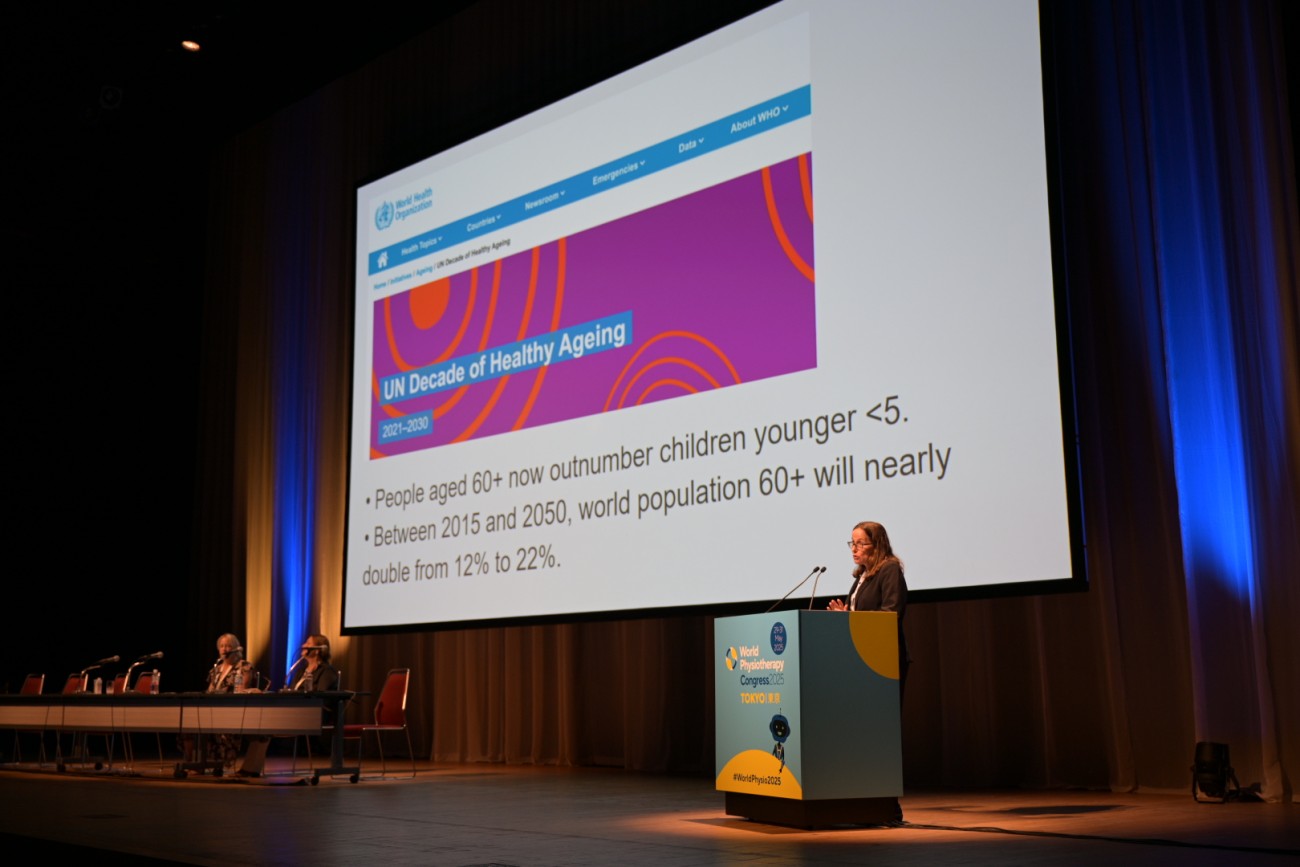
Melanie Haley from Eastern Health in Melbourne examined how these same guidelines are being implemented at a health service level. She shared the case of Maria, an older patient with Parkinson’s disease and cognitive decline, and asked: “How confident can we be that Maria will receive evidence-based fall prevention and management strategies during her inpatient stay and on discharge?” A local gap analysis revealed that while assessments were routinely conducted, effective exercise interventions and patient education were underdelivered. Following staff education initiatives and updated patient brochures, documentation of falls education rose from 25 to 80 per cent. However, the overall number of reported falls did not decline. Melanie’s systematic review of 56 studies across 15 countries supported this finding: “Most studies showed modest improvements—and very few measured long-term outcomes.”
The session’s takeaway was clear: physiotherapists must combine clinical expertise, patient-centred education and systems thinking to reduce falls. As the world’s population ages, falls prevention is essential. These global guidelines provide the foundation, but physiotherapists will determine their impact.


